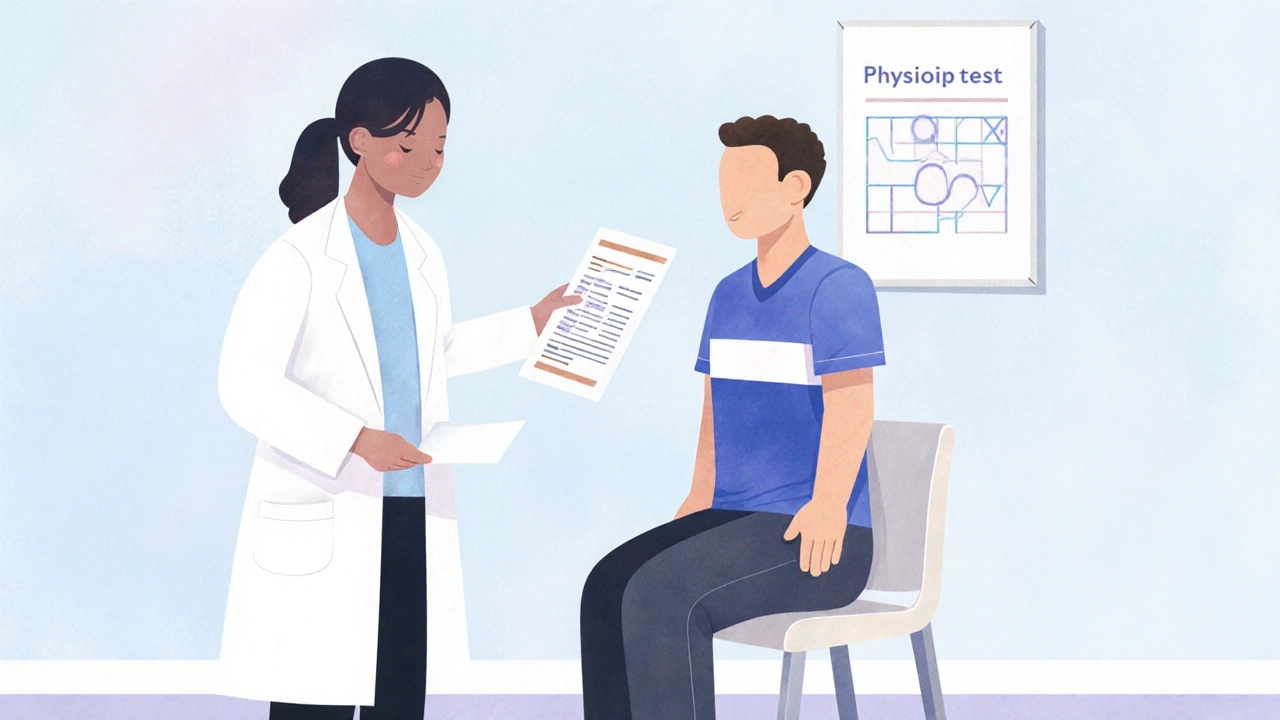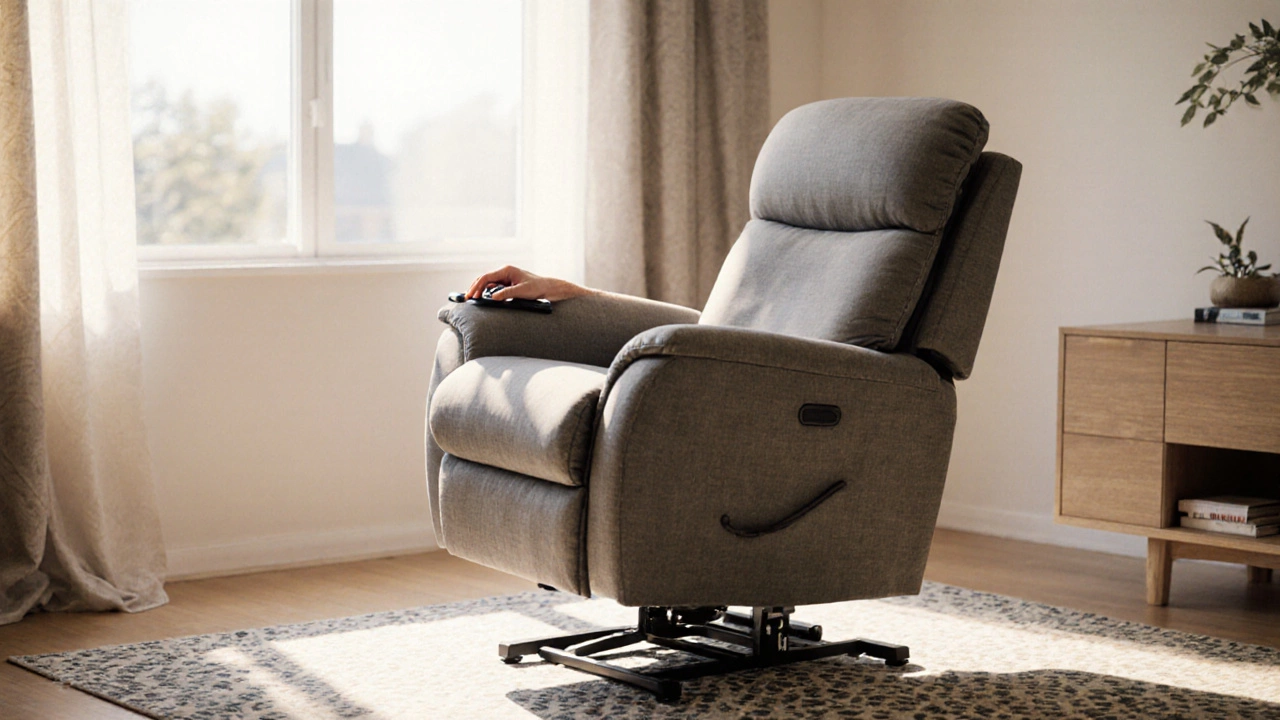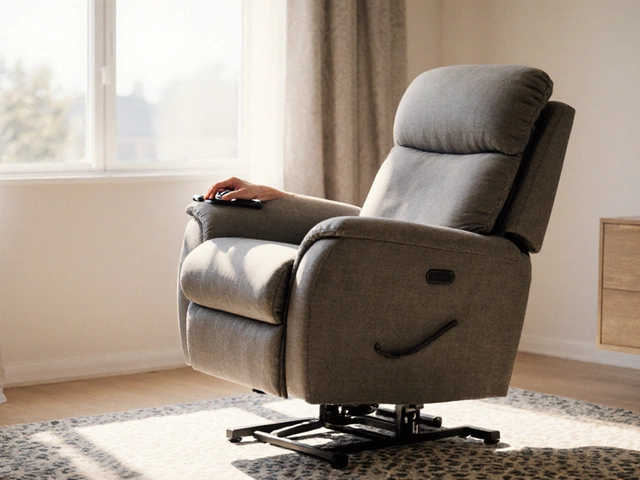Lift Chair Prescription Eligibility Checker
This tool helps determine if you might be eligible for a doctor-prescribed lift chair based on your medical condition and situation. Please select the options that best describe your case.
Your Eligibility Result
Ever wondered whether your doctor can write a prescription for a lift chair and what that actually means for you? You’re not alone. Many people with limited mobility think the answer is a simple “yes” or “no,” but the reality involves medical assessments, funding rules, and a bit of paperwork. This guide breaks down everything you need to know, from the definition of a lift chair to the exact steps for getting a prescription and funding it in New Zealand.
What Exactly Is a Lift Chair?
Lift chair is an electric chair equipped with a motorized base that raises the seat up to a standing height and lowers it back down, helping users transition from sitting to standing with minimal effort. The hallmark features include a smooth lift mechanism, padded upholstery, and optional recline or heat functions. While they look like upscale recliners, lift chairs are classified as mobility aids rather than regular furniture because they serve therapeutic purposes.
Can a Doctor Write a Prescription for a Lift Chair?
The short answer: yes, a doctor can prescribe a lift chair, but only under specific medical conditions and when the chair is considered a medical device. In New Zealand the prescription must come from a qualified health professional-usually a general practitioner (GP), physiotherapist, or occupational therapist-who determines that the chair is necessary for the patient’s health and safety.
When Do Health Professionals Prescribe Mobility Aids?
Doctors don’t hand out lift chairs to anyone who asks. The prescription is tied to a diagnosis that impacts mobility, such as:
- Severe osteoarthritis in the hips or knees that makes standing painful.
- Post‑surgical recovery (e.g., hip replacement, knee surgery) where weight‑bearing is limited.
- Neurological conditions like Parkinson’s disease, multiple sclerosis, or stroke that affect balance.
- Age‑related frailty where the risk of falls is high.
When one of these conditions is present, the doctor may write a prescription that specifies the type of lift chair needed (e.g., standard vs. full‑size, with or without heat).

How to Get a Prescription: Step‑by‑Step
- Schedule a GP appointment. Bring any recent medical reports, imaging results, and a list of current mobility challenges.
- Undergo a functional assessment. Your GP may refer you to a physiotherapist or occupational therapist. They’ll test your ability to stand, sit, and transfer safely.
- Receive a written prescription. If the assessment confirms a need, the health professional fills out a form that includes diagnosis code, recommended chair specifications, and the intended frequency of use.
- Choose a supplier. Look for a vendor that offers chairs meeting the prescription’s specifications and can provide the required documentation for funding bodies.
- Submit the paperwork. Depending on the funding route (ACC, private health insurance, or self‑pay), you’ll need to send the prescription, assessment report, and supplier quote to the appropriate agency.
Funding Options in New Zealand
Getting a lift chair can be pricey-prices range from NZ$2,500 for a basic model to over NZ$6,000 for a premium unit with additional features. Fortunately, several funding pathways can offset the cost.
| Funding Source | Eligibility | Typical Coverage | Approval Authority |
|---|---|---|---|
| ACC (Accident Compensation Corporation) | Injury‑related mobility loss (e.g., falls, motor‑vehicle accidents) | Up to 100% of approved cost | ACC claims officer |
| Private Health Insurance | Policy includes “mobility aid” or “medical equipment” clause | 50‑80% after deductible | Insurer’s medical reviewer |
| Self‑Pay | Any individual | 0% (full cost out‑of‑pocket) | - |
| Community Services Card (CSC) Subsidy | Low‑income households with CSC | Up to NZ$800 discount via participating retailers | Retailer’s subsidy program |
For most people, the quickest route is through ACC if the need stems from a documented injury. If the condition is chronic (e.g., arthritis), private health insurance or a CSC‑related discount becomes the main option.
Documentation You’ll Need
- Original prescription signed by a qualified health professional.
- Assessment report from a physiotherapist or occupational therapist (including functional test results).
- Itemised quote from the chosen lift chair supplier.
- Proof of identity (driver’s licence or passport) and, if applicable, CSC number.
- ACC claim reference number or insurance policy number for funded purchases.
Keep a digital copy of each document; many funding agencies require electronic submission.

Choosing the Right Lift Chair
Not every lift chair suits every medical need. Here are three common categories:
- Standard lift chair. Ideal for mild mobility issues; offers basic lift and recline.
- Heavy‑duty lift chair. Supports higher weight limits (up to 180kg) and often includes sturdier frames-good for larger users.
- Therapeutic lift chair. Adds heat, massage, or pressure relief pads; beneficial for chronic pain management.
When you receive the prescription, it usually specifies the required category. If you’re unsure, ask the supplier to match the chair’s weight capacity, seat height, and any extra features to the doctor's notes.
Common Pitfalls and Pro Tips
- Don’t skip the functional assessment. Without a physiotherapist’s report, ACC or insurers will likely reject the claim.
- Check the supplier’s accreditation. Choose vendors listed on the Health Products Regulatory Authority (HPRA) register to avoid sub‑standard equipment.
- Mind the warranty. Most quality lift chairs come with a 2‑year parts guarantee; make sure the warranty is transferred to you, not the supplier.
- Plan for delivery and setup. Many retailers include free home delivery and assembly, which is essential for safe installation.
- Keep receipts. Even if you self‑pay, you can claim a tax credit for home‑based medical equipment under certain circumstances.
Key Takeaways
- A doctor can prescribe a lift chair when a medical condition limits safe standing or sitting.
- The prescription must be backed by a functional assessment from a physiotherapist or occupational therapist.
- Funding options include ACC (injury‑related), private health insurance, self‑pay, and CSC subsidies.
- Collect the prescription, assessment report, and a supplier quote before submitting a claim.
- Choose a chair that matches the prescribed specifications and ensure the supplier is accredited.
Frequently Asked Questions
Do I need a GP to prescribe a lift chair, or can a physiotherapist do it?
Both a GP and a qualified physiotherapist or occupational therapist can issue a prescription, but the document must include a formal diagnosis and be signed by a registered health professional recognized by ACC or your insurer.
Will ACC cover a lift chair for chronic arthritis?
ACC primarily funds injury‑related needs. For chronic conditions like arthritis, you’ll likely need to rely on private health insurance or self‑pay, unless the arthritis was caused by a workplace accident that ACC acknowledges.
How long does the funding approval process take?
ACC claims typically take 2‑4 weeks after complete documentation is submitted. Private insurers can be faster-often within 7‑10 days-if all forms are in order.
Can I claim a lift chair on my tax return?
If the chair is classified as a medical expense for a home‑based disability, you may be eligible for a tax credit under the NZ Inland Revenue medical expense deduction. Keep all receipts and the prescription to support your claim.
What if my doctor says I don’t need a lift chair but I feel unsafe?
You can request a second opinion from another GP or a specialist (e.g., orthopaedic surgeon). A specialist’s assessment often carries more weight with funding bodies.

